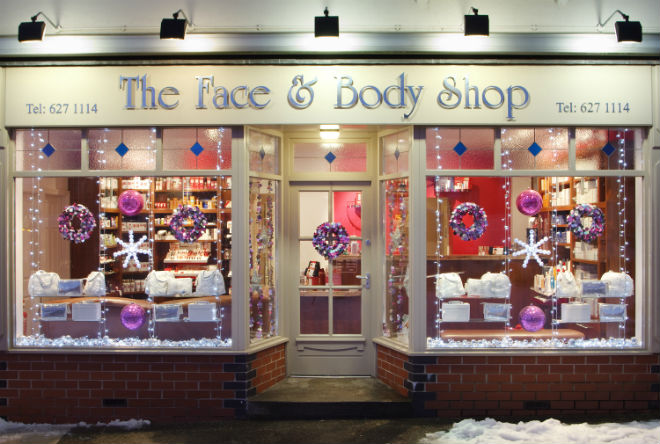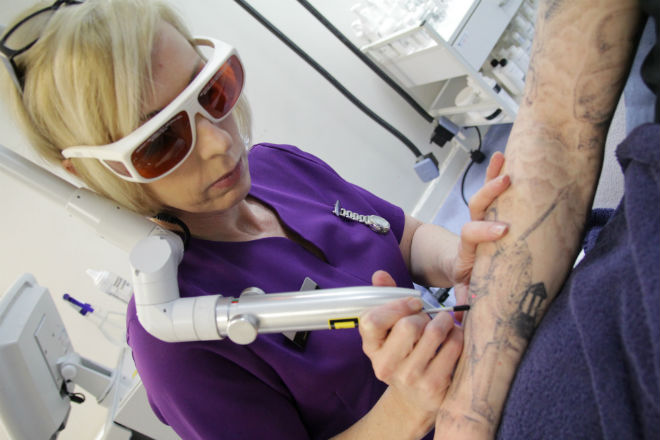Fresh face
Taking on a laser or IPL device doesn’t just open your salon for hair removal. Lucy Douglas explores how light-based skin rejuvenation can change the face of your business

Case study: The Face and Body Shop, Saddleworth, Oldham
Owner: Valerie Simpson
Device: Syneron Candela Elos Plus
Deciding to invest in machinery is a big commitment for salons, both of money and time spent training to use it effectively. But if it’s what the clients are demanding, then taking that plunge is probably the right decision for the business.
Valerie Simpson, owner of the Face and Body Shop in Saddleworth, took on the Elos Plus platform from Syneron Candela following constant requests from her customers for permanent hair removal. “We were getting calls on a daily basis asking if we did laser hair removal. I thought, if that’s the future, that’s the way we need to go.”
Hair removal treatments are mainstay of Simpson’s laser business, but with the Elos’s Sublative and Sublime hand pieces she also offers skin rejuvenation for anti-ageing, problem skins and hyperpigmentation. “Skin rejuvenation for us is the next stage on from beauty, before something more permanent,” says Simpson. “If a client’s thinking about a facelift, but is worried about having it done, the Sublime or the Sublative is the next step.”
Her skin rejuvenation clients fall into two groups: those looking for remedial treatment to a specific complaint, such as rosacea or acne, and those looking for anti-ageing treatment. “Predominantly its women with aged skin due to sun damage,” she says. “It’s been absolutely fantastic on the brown age spots on the backs of people’s hands. That’s a really quick treatment that we’ve had loads of people come in for. We’ve also had some fantastic results on melasma.”
Using laser for skin rejuvenation requires a course of treatments, and Simpson and her team build bespoke packages that include skincare and other treatments, such as peels, to get the desired results. There is a natural peak in clients beginning treatment in the autumn to avoid the sun. However, Simpson says the clients who come for skin rejuvenation are usually “really serious about looking after their skin”, and are happy to stay out of the sunshine even in the height of summer.
The salon does a good trade in acne treatment using the Elos device, and Simpson thinks acne cases are on the rise due to hectic lifestyles. “It’s systemic and stress related. Some people get cold sores, some get generally run down, some get acne,” she says.
Clients coming for acne treatments range from teenagers right through to people in their mid 60s, she says, adding that the increase in treatment options available for teens with problem skin is very appealing to parents. “We get our regular clients, saying, ‘my son or daughter is 14 and starting to get acne. I had it when I was a teenager and I don't want him to suffer like I did. Can you do anything?’ Of course we can. We’d probably put them on a programme of one treatment a week for between six and 12 weeks, with a consultation update every now and then to see how they’re getting on,” she says.
Wrong hands
While the market for laser and IPL treatments is a lucrative one, Simpson warns that it’s not for everyone. “Laser is not to be taken lightly,” she warns. “It’s a very invasive machine, and if you put it in the wrong hands, you can do a lot of a damage.”
She put her team through two months’ training with the Elos before launching it into the salon, and all her therapists that use the device are working towards Level 4 diplomas in laser and IPL. She is also keen to see more regulation in this sector, and thinks cheap devices coming into the market from the Far East are giving the industry a bad image. “It’s really important that therapists and aestheticians are highly trained in the procedures,” she says. “Doctors use these machines, so you’ve got to be competent to use them.”

Case study: Remedies Beauty, Topsham, Devon
Owner: Wendy Willis
Device: Lynton Lumina
Light-based treatments are big business in today’s market, and with such a wealth of increasingly powerful and safe technologies available, the lines between topical beauty salon therapies and doctor-led aesthetic treatments is becoming more blurred. The right piece of equipment can open up a salon to a host of advanced anti-ageing treatments, and instantly visible results that clients will pay a premium price for.
Wendy Willis, owner of Remedies Beauty, uses the fractional handpiece on Lynton’s Lumina, a device that offers both laser and IPL technologies, at her Devon clinic. “We use it mostly for fine lines, wrinkles, collagen stimulation, sun damaged skin, that type of thing,” explains Willis. “Fractional is the next step up before you go down the invasive route.”
Remedies has worked with Lynton for 10 years, Willis explains, and machine-based treatments have been at the core of the business for some time, but she is always looking for the next big thing for her clients. “We’ve had the fractional handpiece now for about 18 months. I was aware of fractional technology years before, but I waited until we could get the right device to work for us, because it’s got to be cost effective, and have relatively little downtime,” she says.
Her decision to take on the fractional system was ultimately driven by client demand, she says, and the fact that the technology looked like it was here to stay, “as opposed to a fad”. “I think a lot more consumers now want less invasive stuff. They don’t want to take time off work, or hide away for weeks, and that’s what most of these treatments do now. You need a few more of them, but the end result is just as good as, if not better than, some of the more invasive treatments, like CO2 laser or, to some extent, injectables.”
Laser aware
Willis says that an increase in publicity about laser treatments has done wonders for her business, with clients becoming more aware of the potential of using laser for their skin complaints. “It tends to be clients who have read something in a magazine about what lasers can achieve, and will book in to get some more information,” she explains.
All Remedies’ clients undergo an aesthetic review, an hour-long consultation with Willis to discuss their skin complaints and the results they’d like to achieve, so that she can decide which course of treatment would be right for them, from a new skincare regime, through to recommending a plastic surgeon, if that’s what the client is after. “Of course, you always have to do a patch test,” she explains, “so I’ll talk to them about that as well.”
In addition to the Lumina and its fractional handpiece, Willis also has a Q:Switch device, which is used mainly for tattoo removal and some pigmentation treatments, a pulsed dye laser and an Nd:Yag laser. It tends to be the more mature clients that have fractional treatments, although Willis says they are getting younger. “Many are about 50, or even 45,” she says. And that’s a trend Willis has noticed throughout all her laser treatments. “They’re getting younger. They are starting to look to look at it in the mid-30s, to help keep their skin in good condition and slow down the ageing process. They don’t want to leave it too late.”

